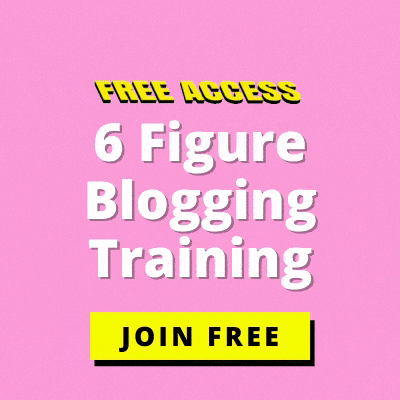Money usually comes hard and goes very fast. Now-a-days there seems to be an endless list of things we must prepare for, must save for and work for, but there are only so many hours in the day to make as much money as we possibly can.
Who wouldn’t want to have a little money put aside that actually works for us instead of us working for money? And wouldn’t it be great, if that little bit of money grew over time?
It would be amazing, but most of us hesitate to start investing, because we don’t have the experience or knowledge on how to start. Fear not! Below are 10 ways start investing your hard earned money.
Table of Contents
1. High Interest Savings Account
What does this mean exactly? In a nutshell: you put a certain amount of money into a savings account at a bank that offers you a high interest rate. This interest rate is calculated daily, based on the money that is in your account on that specific day. You get paid your interest earning by the bank each month.
It is a great way to have your bank and money work for you and make some money on the side and the more money you put into that account to greater your interest return will be at the end of the month.
The good thing about this type of investment is that you can take the money out of the account any time you want. The downside is that the money you take out of the account is taxable, so some of the profit you make goes to the government.
For our American readers this includes some shopping around and finding the bank that offers you the greatest interest rate.
Of course, we did not forget about our Canadian readers. From now, January 2020, until the end of April 2020 Tangerine offers a promotion for new clients to open a savings account with an interest rate of 2.75% for the next 5 months, including RIF (Retirement Income Fund and US dollars savings accounts). After that the interest rate goes down to 1.05%, without a monthly fee and a $0 minimum balance.
2. 401(k)
This is a retirement account. It is sponsored by the company you work at. It offers stocks and bonds you can invest in, depending on when you plan on retiring.
There are two different types of plans, the traditional plan decreases your annual income tax and withdrawals you make are taxed.
With the Roth plan, the second option, you make post-tax income contributions and withdrawals are tax-free.
You choose the investment that works best for you, and you and your employer contribute to the plan up to the dollar amount set by the IRS.
Talk to your employer about the options that are available to you, because this is a great way to put your money to work and have the company work for you in a sense.
3. Index Funds
Index fund or index tracker is an exchange-traded fund or mutual fund that follows a set of pre-set rules to track specific investments.
Now, what the heck does that even mean? It means that an investment portfolio can be created that reflects the securities of a distinct index. It is an investment using a rule-based system to investing.
They don’t take a lot of time to manage and not much skill and experience is needed when investing in index funds.
Index funds imitate the performance of a financial market index to describe the market and compare the return on an investment.
Some index funds like Schwab and Fidelity have funds available to get you started investing for as little as $1.
The way I can put my head around it is this way: index bonds are those boxes you can purchase that contain the best products of your interest, like those fitness or lifestyle boxes you subscribe to receiving every three months. Those contain the best, most efficient products based on the interests you have identified in your membership profile.
4. Stocks
When it comes to stocks, there are two ways of making an income, active or passive.
An active income is pretty straight forward in that you buy stocks or shares from a company when they are at a low cost to you and sell them when they have increased in price to make a profit. Very easy.
A passive income comes from dividend investing. You will receive dividend checks on a quarterly basis, a sort of reward for your continued confidence in the company you invested in. You give them some of your money, they make money with your money and pay you back a portion of the profit.
This requires less attention and is more of a long-term investment option, because the longer you hold stock in the company, the more dividend checks you will receive from the company.
5. Invest with Acorns
Acorns, Acorns Grow Inc, is an investment app. With it you can invest easily and passively in stocks.
Their investment portfolios vary from conservative to aggressive and they are pre-made to choose from.
With this app you can link your credit or debit card and every purchase you make the app will round up the sum and invest the difference.
The app has three different plans to choose from, ranging from $1 to $3 a month.
6. Purchase US Treasury Bonds
These bonds are issued by the United States government. They are a safe investment option with a very high probability of payment.
I have checked the yield rates for monthly and yearly options and as of 13th January 2020 they are as follows:
| Time Frame | Yield |
| 1 Month | 1.54 |
| 2 Months | 1.56 |
| 3 Months | 1.57 |
| 6 Months | 1.57 |
| 1 Year | 1.53 |
| 2 Years | 1.58 |
| 3 Years | 1.60 |
| 5 Years | 1.65 |
| 7 Years | 1.76 |
| 10 Years | 1.85 |
| 20 Years | 2.16 |
| 30 Years | 2.30 |
There are plenty of options to choose from, it just all depends on how quickly you want to receive a payout and how long of a commitment you are willing to undertake.
7. Roth IRA
A Roth IRA is a retirement account that you contribute to with post-tax income. You can withdraw any contributions from it tax-free, but not any earnings.
This type of account gives you more freedom than employer-sponsored one.
You should open a Roth IRA as early as possible in your working career while you are still in a lower tax bracket. This will allow you to make contributions while paying minimal taxes.
If you are the sole earner in your household or single, you can contribute $6000 to your Roth IRA. this amount increases $7000, if you are 50 years of age or older by then end of the current year.
This is based on you having a MAGI (modified adjusted gross income) of less than $122,000 a year.
The Roth IRA is a great savings and investment tool for growing tax-free earnings that you can withdraw.
8. Pay Off Debt
By paying off your outstanding debt you are investing in yourself and in the freedom of your future.
Sound financial advice tells us to eliminate our debt first before beginning to invest in our retirement, because while we might be earning a single-digit percentile in stock market investments, we are forced to pay double-digit interest rates on our credit card and credit line balances.
Taking the money we so eagerly want to invest in stocks and bonds and putting it on our credit line can make a huge difference in the interest we are forced to pay, because it is a calculated percentile of the money we are still owing.
So, hypothetically speaking, 10% interest rate of $4000 is a lot less than 10% interest rate on $5000.
9. Save for Child’s College in a High Interest Savings Account
Let’s face it, the price for a college or university education is horrendous and now-a-days most careers paths are only available with the show of that stamped piece of paper from a stuffy-sounding educational institution after it has drained you and your child dry and possibly left you with a considerable amount of debt by the time graduation comes around.
I’m totally not bitter, but the reality is a must when faced with the fact that your child will at some point apply for college/university.
Anyone who has kept an eye on the rise of tuition has noticed that increased exponentially, while the annual salary hasn’t.
Investing money in a high-yielding savings account (or any of the above-mentioned options, although the savings account is the safest option) as soon as possible is a sure way to relieve some of the future stress placed on you to come up with the money to send your child to school and for your child to be able to focus on their studies instead of having to work double shifts to make ends meet.
Another option is the 529 College plan is a tax-free investment plan and depending on which state you are residing the contribution rate is relatively high.
The great option about this plan is that you can change it from one beneficiary to another, in case one child does not want to attend college.
10. Start an Online Business
Simply put, start a side-hustle by blogging about what is in demand and you are passionate about.
Generate a passive income after you have set up your website and published a number of articles.
You can start your blog with minimal start-up capital by using the free wordpress.com options or invest a little money and purchase your own domain name and use a premium theme.
When you display ads and have a certain amount of views per day you can anticipate a small income to accumulate.




Leave a Reply